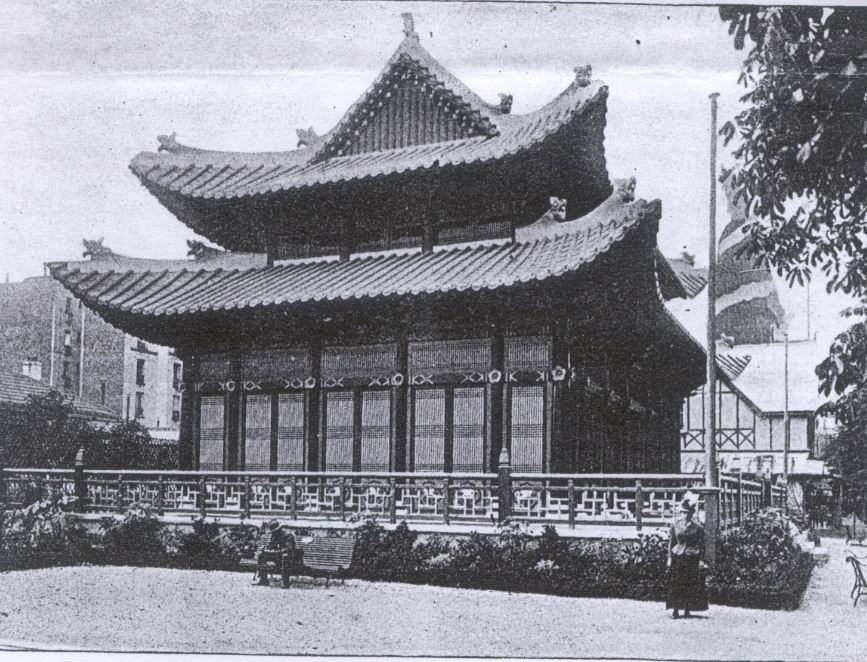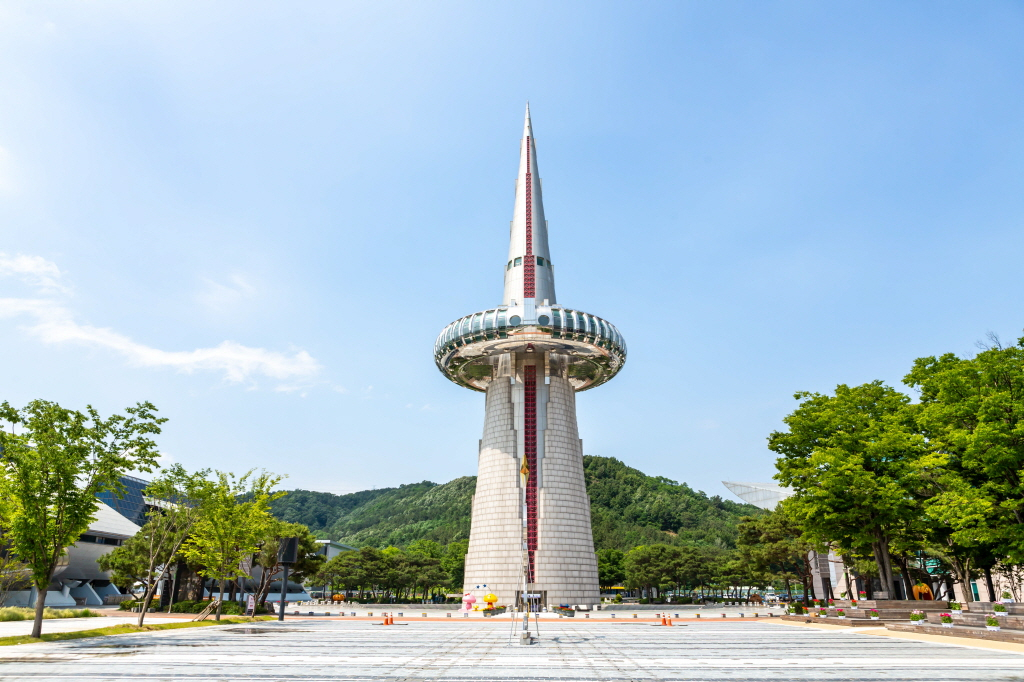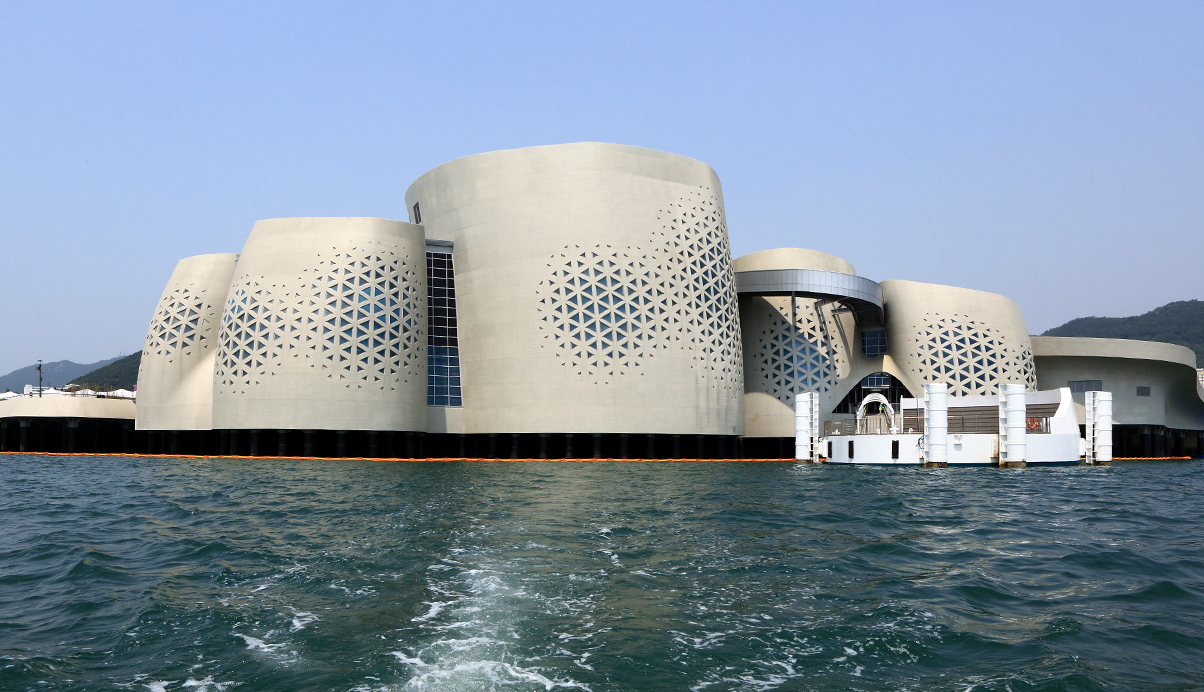 |
The Korea exhibition is displayed at the 1893 World's Fair in Chicago. ("The Book of the Fair," published by the Bancroft Co.) |
South Korea promoting its southern port city of Busan as the host city for the 2030 World Expo marks the culmination of 130 years of the country's participation in the world's largest international exposition.
Korea, then the Joseon Kingdom, first participated in the World's Fair in 1893 in Chicago, in honor of the 400th anniversary of Christopher Columbus' voyage to the American continent.
Despite Japanese aggression, Joseon secured a small exhibition space of just 83.5 square meters adorned with a traditional Korean-style roof, where the small country from northeast Asia displayed everyday objects such as kites, cushions and lacquerware, as well as armor and cannons. The exhibition was accompanied by a 16-member delegation, including a group of royal court musicians who performed Korean traditional music.
However, the tiny size of the Korean pavilion stood in stark contrast to neighboring Japan's massive pavilion, which was more than 40 times larger. This contrast led to the Korean exhibition being described as having "hastily knocked together a rather inexpensive collection of Corean junk and shipped it off to Chicago" by John Cockerill, a reporter for the New York Herald in 1895.
 |
The Korean pavilion at the 1900 Paris Expo (Cheongju Early Printing Museum) |
Joseon strived to connect its little-known country with the world as it continued to participate in the 1900 Paris Exposition, which featured the world's oldest book printed with movable metal type, "Jikji." However, this baby step forward was short-lived, as the 500-year-old kingdom gave way to Japan's annexation and colonial rule from 1910 to 1945.
The 1950-53 Korean War soon after independence from Japan left the country in ashes and divided. The three-year war left tens of millions of people in poverty, and political chaos followed.
It was only in 1962 that Korea resumed its regular participation in the World Expo, again held in Chicago. It was Korea's first time to have its own pavilion, which spanned 326 square meters.
Granted membership to the Bureau International des Expositions (BIE) in 1987, Korea organized its first Specialized Expo, recognized by organizing authorities in Daejeon six years later. The 1993 event, then known as the Taejon Expo, marked Korea's 100th year of participation in world expos.
 |
Hanbit Tower at Daejeon Expo Science Park (Daejeon Tourism Organization) |
The event, held under the theme, “The Challenge of a New Road of Development,” was the first of its kind for a developing country to have hosted an international exposition recognized by the BIE. Its 93-day run beginning in August drew over 14 million visitors from 108 countries and 33 international organizations and institutions together.
In 2012, Korea hosted its second Specialized Expo in the coastal city of Yeosu, South Jeolla Province. The 83-day run from May to August attracted some 8.2 million visitors from 105 countries. The event's theme was "The Living Ocean and Coast."
Meanwhile, according to the BIE, Korea's recent participation efforts have been recognized with several awards, including the gold prize at World Expo 2005 Aichi for design, silver at World Expo 2010 Shanghai for interior design and bronze at Specialized Expo 2017 Astana for design and visual presentation.
Setting aside the impressive feat demonstrating the nation's fast-paced rise to Asia's fourth-largest economy, another watershed moment is expected to come in the 130th year of Korea's World Expo history, as the BIE member states will vote for the host city of the World Expo 2030 in November this year, with Busan among the candidates.
 |
A pavilion at Yeosu Expo 2012 (DMP Partners) |
Representatives of the BIE are here to assess the feasibility and viability of Busan's Expo project this week. Busan is third on the list for the BIE officials’ visit out of the four candidates: Riyadh in Saudi Arabia, Rome in Italy and Odesa in Ukraine.
Busan is looking to host Korea's first ever Registered Expo, which would differentiate itself from the previous two events.
The two Specialized Expos did not have participating countries building their own pavilions, but the quinquennial Registered Expo does, with the host city providing land for up to six months.






![[Today’s K-pop] Blackpink’s Jennie, Lisa invited to Coachella as solo acts](http://res.heraldm.com/phpwas/restmb_idxmake.php?idx=644&simg=/content/image/2024/11/21/20241121050099_0.jpg)
